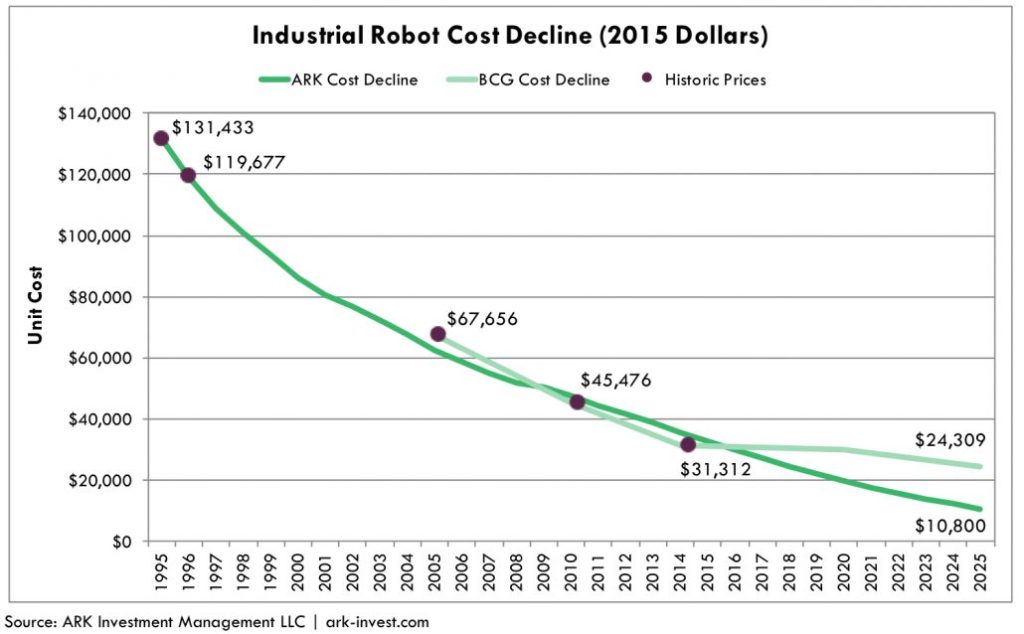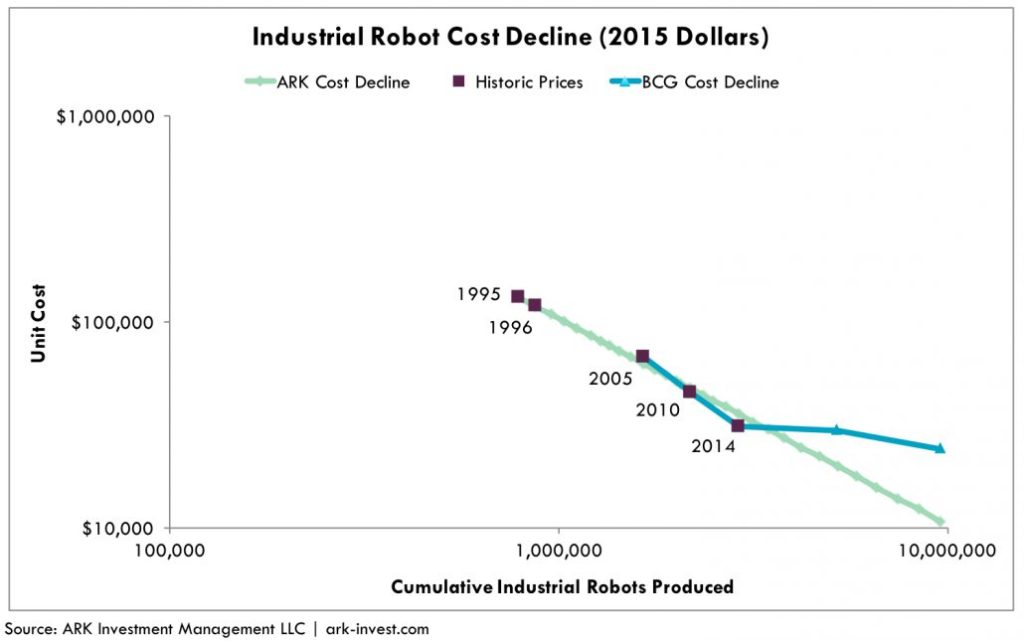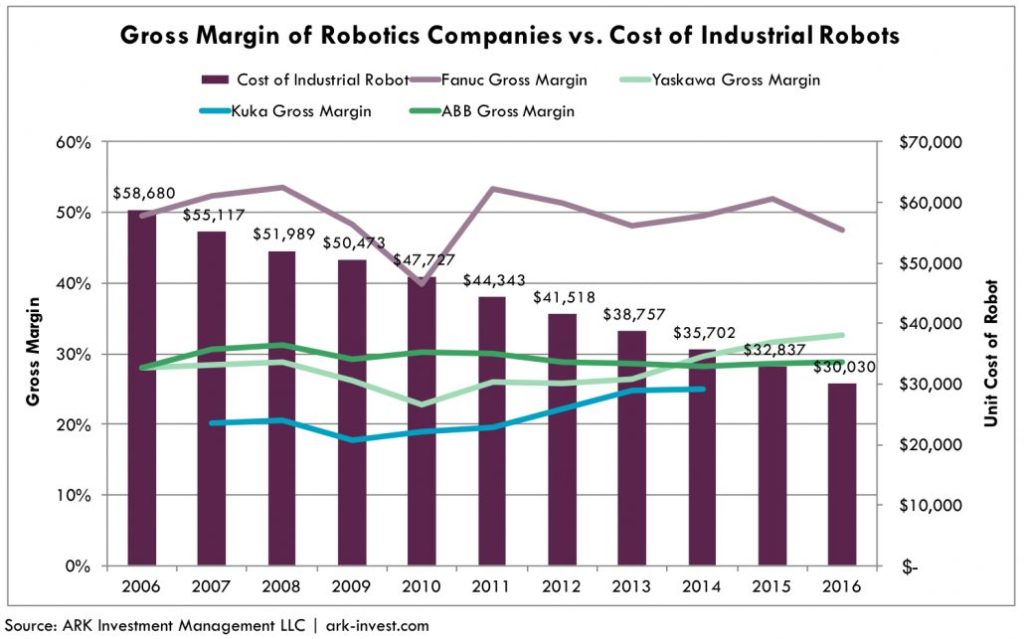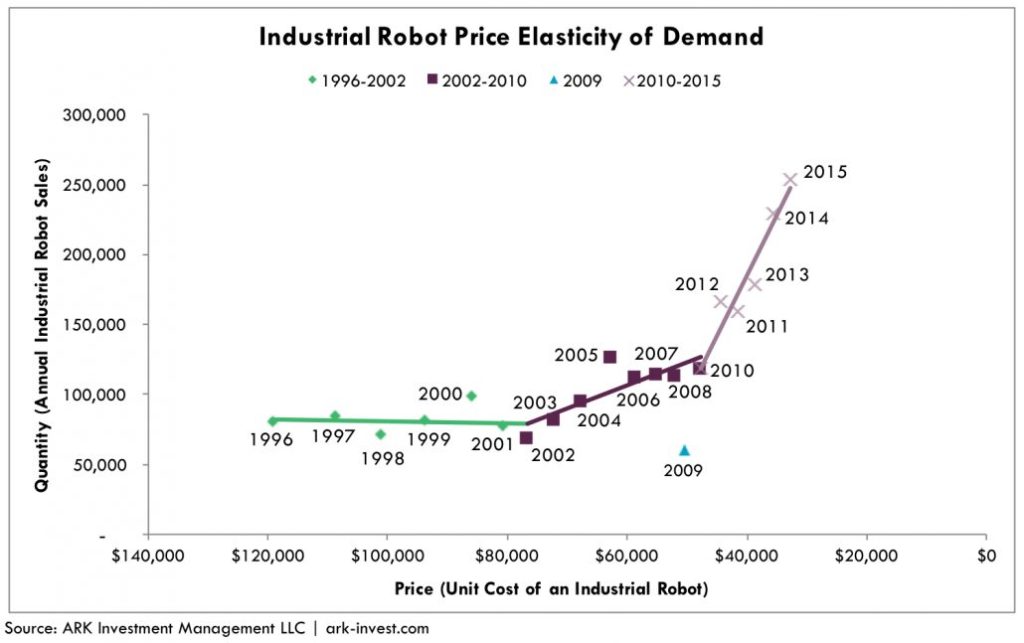Industrial Robot Cost Decline

According to ARK’s research, industrial robot [1][2] costs will drop by roughly 65%, to levels much lower than most analysts now anticipate, by 2025. Combined with advances in machine learning and computer vision, this drop in costs should cause an inflection point in the demand for robots as they infiltrate new industries with more provocative use cases.

ARK anticipates that industrial robots will cost less than $11,000 per unit, much less than the Boston Consulting Group’s (BCG’s) expectation of $24,000, by 2025, as shown above.[3] [4] In the robotics space, that cost decline – known as the learning rate – has been roughly 50%. Based on historical production and pricing data, ARK’s application of Wright’s Law suggests that BCG’s expectations are far too conservative.

While BCG anticipates that the historical price trajectory of robots will diminish and stall in response to underlying material costs, it fails to anticipate and incorporate innovations evolving in manufacturing. 3D printing, for example, should reduce the use and weight of materials dramatically, up to 75%, without diminishing performance.
The history of publicly traded robotics companies suggests that the industry has benefited significantly from manufacturing efficiency gains. As shown below, while robot prices have dropped by 40% during the past decade, the industry’s gross margins have been stable to improving. During the next few years, this margin structure is unlikely to change significantly.

As robots have become cheaper and easier not only to train but also to integrate into traditional production processes, growth in the demand for industrial robots has accelerated in two stages since 2000, as shown below. Prior to 2000, lower prices would shrink the total industrial robot market. Today, topline growth accelerates in response to declining costs.

While ARK’s forecast for industrial robot sales is based on the price elasticity of demand during this decade, continued increases in the capability of robots – perhaps inspired by artificial intelligence – could boost sales beyond the forecast presented in the chart below.

Important to note, ARK has based its forecast of cost declines only on the price of industrial robots, without regard to improvements in their performance. As machine learning and new sensing capabilities impact them, not only will their performance improve but other costs associated with installation and integration should fall as well. For example, they will require little or no human programming and will be able to roam freely instead of being trapped in safety cages and by other barriers. As a result, ARK anticipates the industrial robot market will hit many other tipping points, surprising on the high side of expectations, perhaps dramatically, during the next few decades.

 Actively Managed Equity
Actively Managed Equity Overview: All Strategies
Overview: All Strategies Investor Resources
Investor Resources Indexed Equity
Indexed Equity Private Equity
Private Equity Digital Assets
Digital Assets Invest In The Future Today
Invest In The Future Today
 Take Advantage Of Market Inefficiencies
Take Advantage Of Market Inefficiencies
 Make The World A Better Place
Make The World A Better Place
 Articles
Articles Podcasts
Podcasts White Papers
White Papers Newsletters
Newsletters Videos
Videos Big Ideas 2024
Big Ideas 2024



